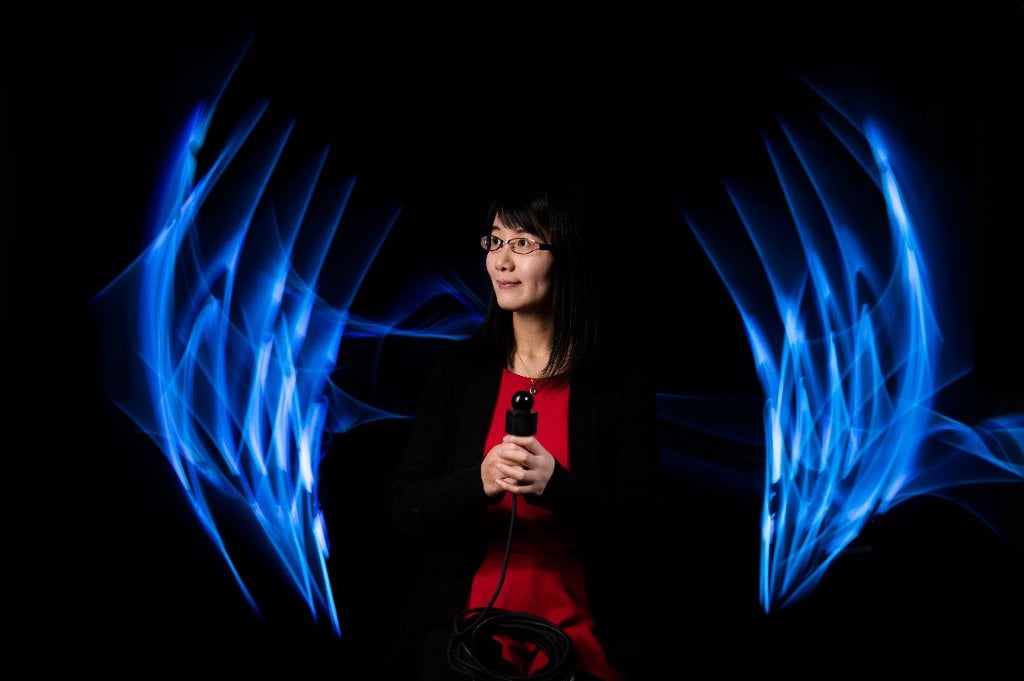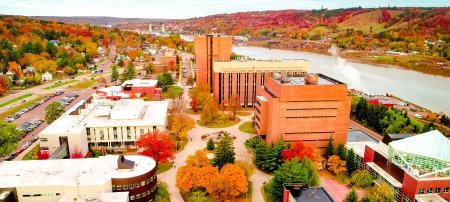Home energy loads are not constant. As we move through our days, use ebbs, flows and peaks. To achieve a breakthrough in power-grid optimization research, award-winning researcher Sumit Paudyal had to teach himself the required math.
Paudyal, an assistant professor of electrical and computer engineering at Michigan Technological University, has received the National Science Foundation's prestigious CAREER Award for his work to advance and optimize power grid efficiency from a unique perspective—compensating for load increase at the home level rather than relying on conventional generation from legacy power providers. To solve the challenge, Paudyal faced his own. He spent three years learning the required math.
Power to the People Via Complex Algorithms
The guiding philosophy behind the research is that individual homes, and the network of homes within neighborhoods, can use smaller energy resources, like photovoltaic (PV) panels, batteries, electric vehicles and other energy storage systems to keep up with grid demands. "As their load went up, people would be able to compensate with whatever resources they have that are flexible," Paudyal explains. "Optimizing resources on the customer level is a different, unique field."
But the researcher's $500,000, five-year CAREER award isn't rooted in a new device or system. His project, "Operation of Distribution Grids in the Context of High-Penetration Distributed Energy Resources and Flexible Loads," centers on a mathematical quandary: "How do we come up with a computational method for a large number of small distributor sources—the algorithms to speed up the computation, and the algorithm that scales up for the entire grid?"
In a conventional power grid that relies on large generators, dispatch instructions for handling load variances are sent every couple of seconds, for example. "There's a computation behind that," Paudyal explains. He focuses on aggregating all the small, individual home resources together, working from the mathematical side to address the computational efficiency behind the process.
"Smart grid has become a buzzword, but the mathematics point of view is relatively new," Paudyal says. "It was not the case 10 or 15 years back. Only power people were working on solutions."
Paudyal is one of those power people. But during the course of his work he came to realize that he would have to step outside his discipline. Innovations in energy devices, no matter how brilliant, can't accomplish widespread improvements to communities and move the planet away from reliance on fossil fuel unless they can be scaled up, to address the needs of millions. The answers are in the algorithms.
"I had to teach myself to solve the math problem. As my skills grew in math I was able to share my vision."
Paudyal wasn't particularly surprised at having to embark on a new learning path. After all, NSF CAREER Awards were created to address real-world problems by advancing the underlying theories of math and science. "It was risky. I'm not a mathematician. I trained myself over the years," says Paudyal, who admits he was wary of the scrutiny his proposal—and his mathematical skills—would undergo.
Reviewers deemed him up to the task.
"While this is a topic that is in fashion in the technical literature, this reviewer would like to commend the PI for addressing the problem with engineering rigor," one reviewer wrote. "In contrast with a great amount of past and existing research, this proposal puts forward one of the few approaches that can adequately address the uniquely different characteristics of distribution networks and in the face of the increased penetration of DERs (Distributed Energy Resources) and load flexibility, and distribution network constraints."
Taking STEM on the Road
NSF's CAREER Award is a milestone that recognizes faculty early in their careers for outstanding integration of both research and education that serves the mission of their institutions. Paudyal's educational outreach plan also garnered reviewer praise for being "well thought out," especially the idea for a mobile microgrid lab.
In addition to teaching power system courses at the University and providing online public lectures, Paudyal is taking the Michigan Tech Mobile Lab to Brookings, South Dakota, and El Paso, Texas, to work with high school and undergraduate students including Native American and Hispanic young people. "We'll demonstrate through the microgrid how it works."
Michigan Technological University is an R1 public research university founded in 1885 in Houghton, and is home to nearly 7,500 students from more than 60 countries around the world. Consistently ranked among the best universities in the country for return on investment, Michigan's flagship technological university offers more than 185 undergraduate and graduate degree programs in science and technology, engineering, computing, forestry, business, health professions, humanities, mathematics, social sciences, and the arts. The rural campus is situated just miles from Lake Superior in Michigan's Upper Peninsula, offering year-round opportunities for outdoor adventure.






Comments